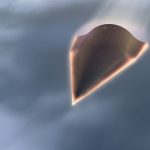
An emerging U.S. military strategy to contain China in the South China Sea: Drone subs
Monday, April 25, 2016 by usafeaturesmedia
http://www.nationalsecurity.news/2016-04-25-an-emerging-u-s-military-strategy-to-contain-china-in-the-south-china-sea-drone-subs
(NationalSecurity.news) The U.S. military is weighing several options when it comes to deterring and containing Chinese expansion into the South China Sea, using a combination of air, sea and land-based capabilities, but one of strategies that has remained largely under wraps until recently is the Navy’s deployment of unmanned drone subs.
As reported by the Financial Times, over the past six months the Pentagon has begun to openly discuss the once-secret program to develop unmanned undersea vehicles. Defense Secretary Ashton Carter recently made a special mention of the program in a speech covering military strategy in Asia and suggested that they could be used in the South China Sea, which has many areas of shallower water.
The Defense Department’s investments in next-gen submarines “includes new undersea drones in multiple sizes and diverse payloads that can, importantly, operate in shallow, where manned subs cannot,” said Carter, who visited the aircraft carrier USS John C. Stennis last week, which is currently deployed in the South China Sea.
In disclosing the drone sub program and other emerging technologies that the Pentagon hopes to have operational by the end of this decade, U.S. military planners are sending a signal they hope will deter rivals like China and Russia by emphasizing continued military superiority. The drone subs are part of the U.S. effort to develop new robotics in a bid to keep ahead of military rivals.
“The idea is that if we were ever to get into a bust-up in the South China Sea, the Chinese would not know for sure what sort of capabilities the U.S. might have,” Shawn Brimley, a former White House and Pentagon official now at the Center for a New American Security, told The Financial Times. “This might have some deterrent impact on the potential for provocative behavior.”
Carter’s trip to the Stennis was part of a wider visit to the region that included a trip to the Philippines, in an effort to shore up support for, and cooperation with, regional allies, as a bulwark against China’s rising influence. The Philippines, once a major port of call for the U.S. Navy that has agreed to host American fighter planes, is one of several Asian nations with claims in the South China Sea that rival those of China.
“Countries across the Asia-Pacific are voicing concern with China’s land reclamation, which stands out in size and scope, as well as its militarization in the South China Sea,” Carter said in Manila.
As China becomes more aggressive and moves additional military assets onto manmade islands and atolls that it has reclaimed, the U.S. and its allies have begun to concentrate more on submarine warfare. Beijing’s major investments in ballistic missile technology are a bigger threat to the Navy’s surface fleet and aircraft, as well as land-based forces in the region.
As such, the U.S. will invest $8 billion next year in submarines to “ensure ours is the most lethal and most advanced undersea and anti-submarine force in the world,” Carter said.
Last fall the Navy unveiled a new 10-foot, semi-autonomous drone sub known as the Large Displacement Unmanned Underwater Vehicle, which is scheduled for its first sea trials this summer. The Pentagon would like to have a fleet of them ready to deploy by 2020 if testing goes well.
In addition, as reported by Breaking Defense in October 2012, the Navy’s then-newest nuclear-powered submarine, the USS Minnesota, a Virginia-class boat, was set for launch, with plans to conduct test-launches of robotic mini-subs and drone subs as well.
More:
- Pentagon examining ‘killer robot’ threat from other nations
- Is Russia set to build highly dangerous combat robots?
- The Pentagon is growing concerned over development of Russian and Chinese combat robots
See also:
NationalSecurity.news is part of the USA Features Media network.
Tagged Under: Tags: China, drone subs, South China Sea, submarines






